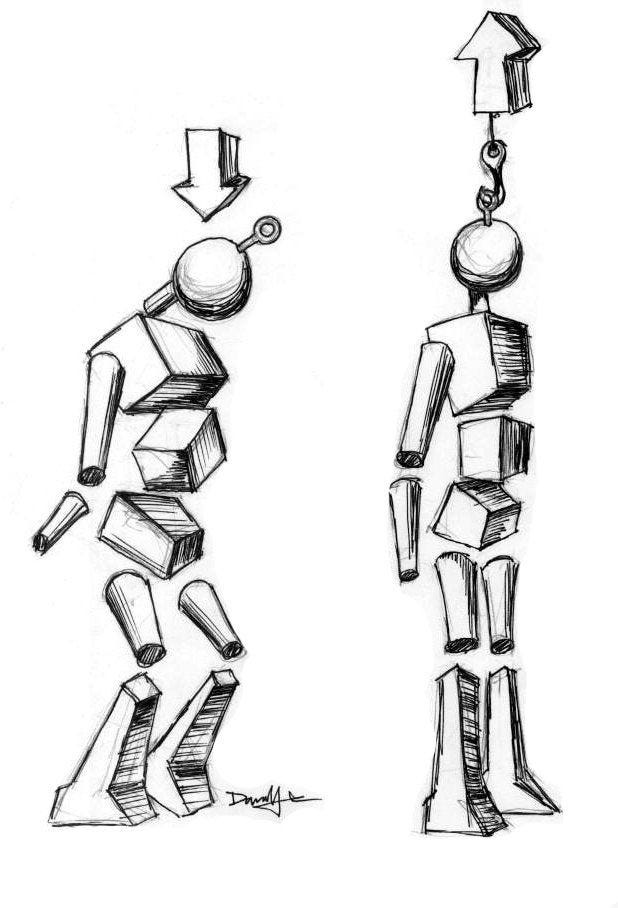Does posture matter? Does bad posture cause pain? Most people would say yes. That's what a lot of us were taught from an early age. But people deserve a clearer, more evidence-based perspective.
To understand posture’s true relationship with chronic pain, it’s helpful to debunk common myths. Let's start with the claim "bad posture leads to chronic pain."
"Bad posture" usually refers to an obvious deviation from textbook anatomical alignment, such as forward head posture or excessive anterior pelvic tilt.
The logic behind this myth (when logic is present) is that these deviations, over time, lead to muscular tension which causes pain and eventually, damage (e.g. disc herniation). There are a couple problems with this logic.
First, everyday postures keep spinal loads well within our capacity to adapt1. Even in your very worst position — extending your head forward while hunching your shoulders in a caricature of computer posture — the pressure exerted on your vertebrae are less than half of that applied by a simple jump. You are not going to herniate a disk with bad posture (not that herniated disks consistently cause pain).
Second, postural deviations are hardly predictive of chronic pain. Many people with horrible posture have no pain. Forward head posture and pelvic tilt are weak predictors of chronic pain. For example, if you tried to guess who has back pain just from pelvic tilt, you'd only be right ~1 out of 100 times2. In the case of head posture, there is a correlation with pain in adults -- but it tells you only a small part of the story. Pain severity seems to depend on entirely different factors3.
Perhaps the worst downstream effect of the meme that posture causes pain is that "fixing posture" becomes overly prioritized in pain treatment. Sure, ergonomic keyboards, keeping your monitor at a good height can make you feel better. But spending months doing posture-correction exercises may not have the impact you’re hoping for.
For most people, other interventions (i.e. education, pain reprocessing, graded exposure to feared activities, lifestyle modifications) have more juice4. Excessive focus on posture can become another way to keep you trapped in a catastrophizing loop. In our evolving hierarchy of strategies for reducing chronic pain, posture ranks low on the priority list.
2022 systematic review of all post‑1990 telemetry and pressure‑sensor papers confirms that ordinary sitting, standing and walking cluster below ~0.6 MPa. These levels are routinely tolerated without detectable tissue damage. https://www.mdpi.com/2075-1729/12/3/457
A 2024 systematic review (46 studies, > 12 000 participants) found only a small effect size for increased pelvic tilt in people with low‑back pain and no consistent differences in lordosis, kyphosis or leg‑length. https://pubmed.ncbi.nlm.nih.gov/39166267/
The Relationship Between Forward Head Posture and Neck Pain: a Systematic Review and Meta-Analysis. https://pmc.ncbi.nlm.nih.gov/articles/PMC6942109/
Psychosocial factors (fear, catastrophizing, stress) show similar or stronger associations with pain severity than postural variables, and their links with postural control are weak. https://pubmed.ncbi.nlm.nih.gov/35583666/




Very interesting. Correcting posture can also cause more tension, for example because of gross movements.
I think it’s also interesting how for some people „good“ posture relates to being a „good“ person.
I‘ve seen parents being strict about posture with their children, probably letting the children associate posture with guilt, stress and rebellion.